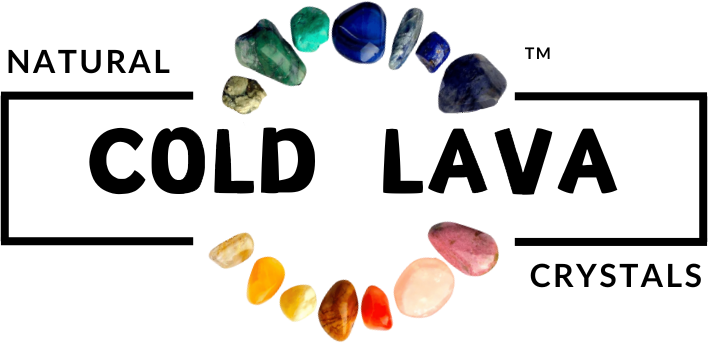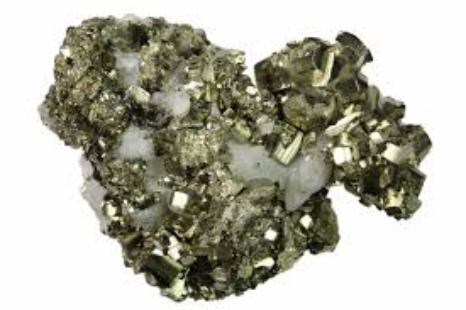Elementor #126475
Why Pyrite Beads Have White Lines: The Real Story Behind a Common Confusion
If you’ve ever held a pyrite bracelet up to the light and spotted thin white lines, tiny pale patches, or a slightly matte streak on a bead, your mind might go: Wait—what? Is it fake? Is the color peeling? This is one of the most common questions we get at Cold Lava Studio. So let’s clear it up—once and for all.
The short, honest truth
Those white lines are almost always natural calcite (or similar) vein-fill minerals that formed with the pyrite underground. When the rough is cut and rounded into beads, polishing can bring these veinlets to the surface—so you finally see them. That’s nature’s fingerprint, not a coating coming off.
What’s happening inside the stone?
Pyrite (iron disulfide, FeS₂) typically crystallizes in a cubic system and often grows alongside other minerals in veins and fractures. Over geologic time, tiny cracks in the pyrite-bearing rock become pathways where hot mineral-rich fluids travel and deposit fillers like calcite or quartz. These fillers can later appear as white or pale lines once the material is shaped into beads.
Think of it like nature’s Kintsugi: fractures are “glued” by other minerals. When you slice and polish the stone, the “glue lines” become visible. Because calcite is softer than pyrite, it can take a slightly duller polish or even flake microscopically at the surface—creating the look of a lighter streak. That’s not paint; it’s a natural contrast between two minerals with different hardness and polish.
Why some beads show lines and others don’t
It depends on where the material was mined and how the rough was cut. Some lots are extremely clean and metallic; others show charming white lines, tiny patches, or specks because more calcite intersected the cut. In some deposits, pyrite literally coexists with calcite in vein systems, so inclusions are expected.
“Peeling color”? Here’s how to tell coating vs. natural
Most natural pyrite beads have a brassy, slightly sparkly metallic tone—not a mirror-like gold. If you rub a suspicious bead on a soft white cloth and the cloth turns gold, that points to a coating. Natural pyrite won’t rub off color. Uniform, hyper-gold beads with an almost chrome finish are likely plated or coated; natural strands show tiny textural variations and sometimes those white calcite veins.
What inclusions can you see besides calcite?
Depending on the locality, pyrite may occur with quartz, calcite, chalcopyrite and other sulfides, and occasional surprises. That diversity is part of the story of how the stone formed—complex fluids, temperatures, and chemistry frozen in time.
Care tips to keep your bracelet happy
– Avoid harsh chemicals, acids, and salt water.
– Wipe gently with a dry, soft cloth after wear.
– Store dry, away from humidity.
The takeaway
White lines in pyrite beads aren’t a flaw or “paint peeling”—they’re natural vein fills revealed by cutting and polishing. Every line is a little chapter from the stone’s formation. If you love crystals for their story and energy, these lines are part of the magic.
FAQ
- Are white lines on pyrite beads normal?
Yes. They’re usually calcite or quartz veins that became visible during polishing.
- How do I know if my pyrite is coated?
A super-uniform, mirror-gold look or color rubbing off onto a cloth suggests a coating. Natural pyrite has brassy sparkle with subtle variations.
- Will the white lines grow or spread?
No. They’re just mineral contrasts at the surface. Handle with care and avoid harsh cleaners.
- Can inclusions lower quality?
It’s subjective. Some prefer clean metallic beads; others love the authentic, earthy look of natural veins. Both are natural—just different aesthetics.




Add comment